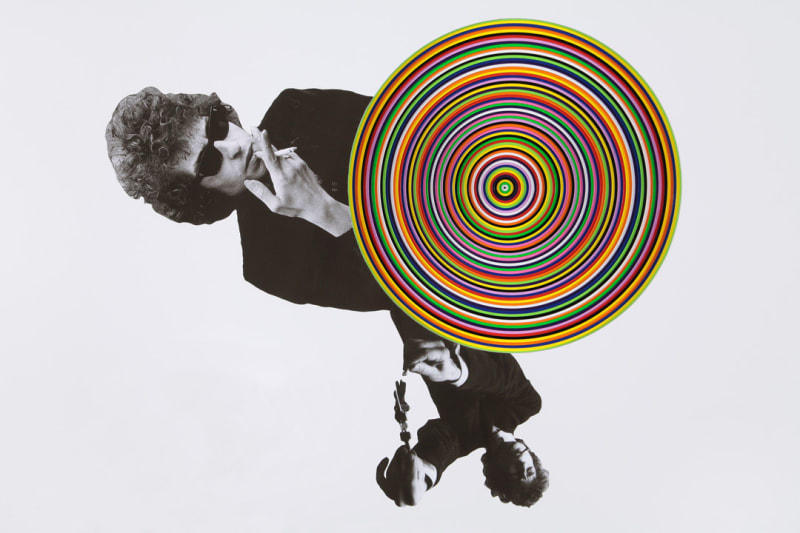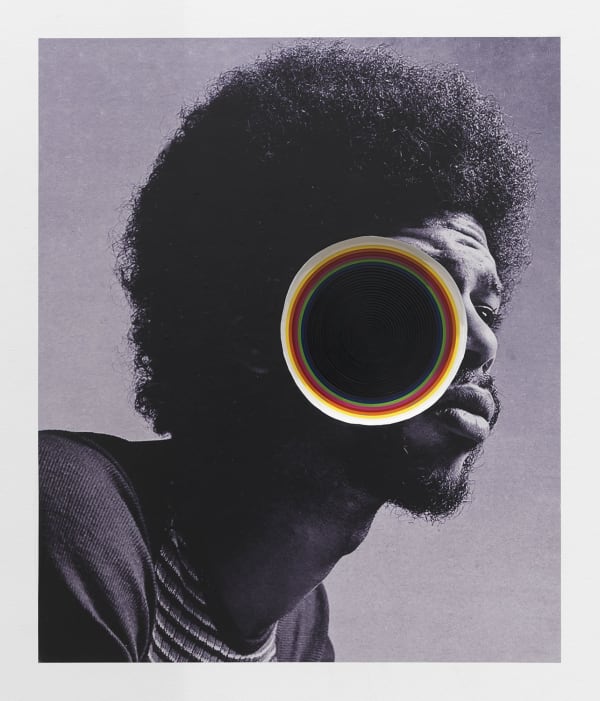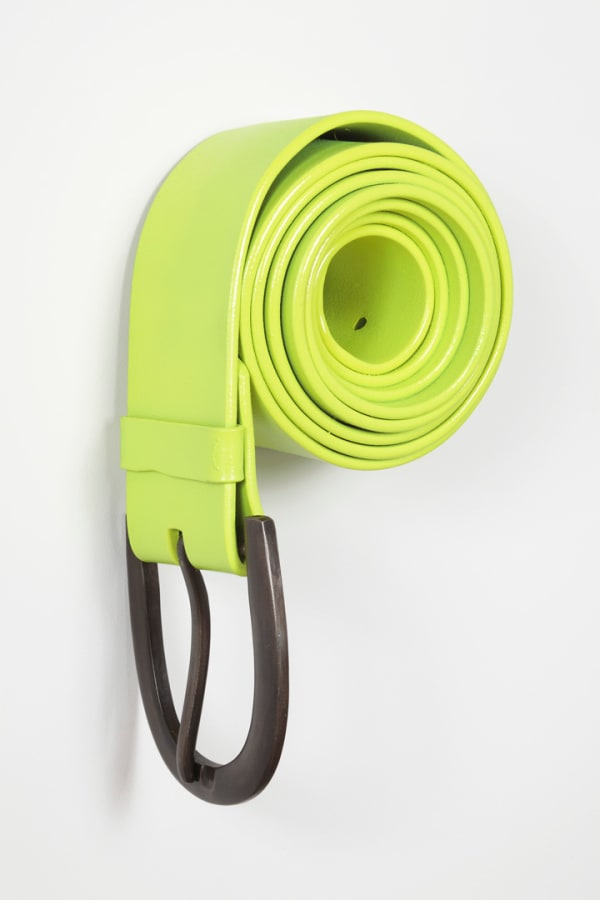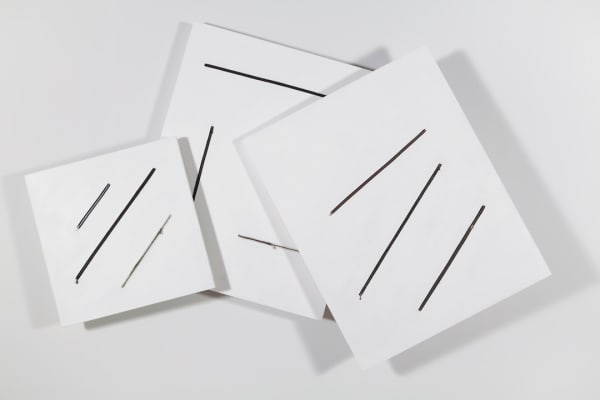Spiritualized: Jim Lambie
October 6, 2011—Jim Lambieʼs fifth solo-exhibition at Anton Kern Gallery feels like a living organism with different parts of one body fulfilling a variety of functions while reverberating in bright colors. The galleryʼs white walls are penetrated by several circular multicolored Vortex cut-outs; a large belt sculpture balances on a circle of cast metal chairs; crushed and disassembled pieces of metal armature are encased in blocks of concrete; an entire wall is covered in layered and brightly colored sheets of metal, called Metal Boxes, their corners folded like craft paper; cast belts of differing sizes and materials are hovering on the walls; a group of Zip Paintings containing outbursts of color; and a disarmingly brilliant and simple wall sculpture consisting of rolled-up tshirts in glass jars occupies one entire corner.
The astonishing variety of materials, none of which are traditional art materials, ranges from found charity shop and household items (t-shirts, jars, belts, zippers, posters, chairs) to industrial materials (paint, MDF board, sheet metal, cement), including their inherent transformative properties such as cutting and casting.
Lambieʼs approach to art making is informed by a few fundamental ideas. A rock musician before he became a visual artist, the artist uses color in a way that is deeply rooted in color theory and specifically relates to the concept of synesthesia, an analogous experience between music and the color spectrum in which the stimulation of one sensory or cognitive pathway leads to automatic, involuntary experiences in a second sensory or cognitive pathway. Different from his rather esoteric predecessors, Lambieʼs choice of color composition is determined by a sense of directness and everyday availability. The modern world seems his source and palette. Which sheds light onto Lambieʼs other basic feature, his Glaswegian origin. Lambie is deeply immersed in the history of a place characterized by the tension between industrialization and liberation movements such as William Morrisʼ utopianism and socialism and the Arts and Crafts movement at large. The Glasgow School of Art, designed by Scottish architect and fellow Arts and Crafts member Charles Rennie Mackintosh, and also Lambieʼs place of study, is an incarnation of such utopian ideas. Echoing Mackintosh, Lambieʼs concern is to build around the needs of people: people seen, not as masses, but as individuals who needed not a machine for living in but a work of art. Lambie shows how we can maintain a sense of self in an over-commodified world of sameness.
-
 Jim LambieSpiritualized, 2011
Jim LambieSpiritualized, 2011 -
 Jim LambieSun Orchid, 2011
Jim LambieSun Orchid, 2011 -
 Jim LambieMetal Urbain (Monochromatic), 2011
Jim LambieMetal Urbain (Monochromatic), 2011 -
 Jim LambieDigitized, 2011
Jim LambieDigitized, 2011
-
 Jim LambieVortex (Sticky Fingers), 2011
Jim LambieVortex (Sticky Fingers), 2011 -
 Jim LambieVortex (Hoochie Coochie), 2011
Jim LambieVortex (Hoochie Coochie), 2011 -
 Jim LambieVortex (Bringing It All Back Home), 2011
Jim LambieVortex (Bringing It All Back Home), 2011 -
 Jim LambieMetal Box (Gin and Juice), 2011
Jim LambieMetal Box (Gin and Juice), 2011
-
 Jim LambieMetal Box (Surf City), 2011
Jim LambieMetal Box (Surf City), 2011 -
 Jim LambieMetal Box (Green Onions), 2011
Jim LambieMetal Box (Green Onions), 2011 -
 Jim LambieMetal Box (I've Been Lovin' You), 2011
Jim LambieMetal Box (I've Been Lovin' You), 2011 -
 Jim LambieBelt Buckle (Voodoo Ray), 2011
Jim LambieBelt Buckle (Voodoo Ray), 2011



























